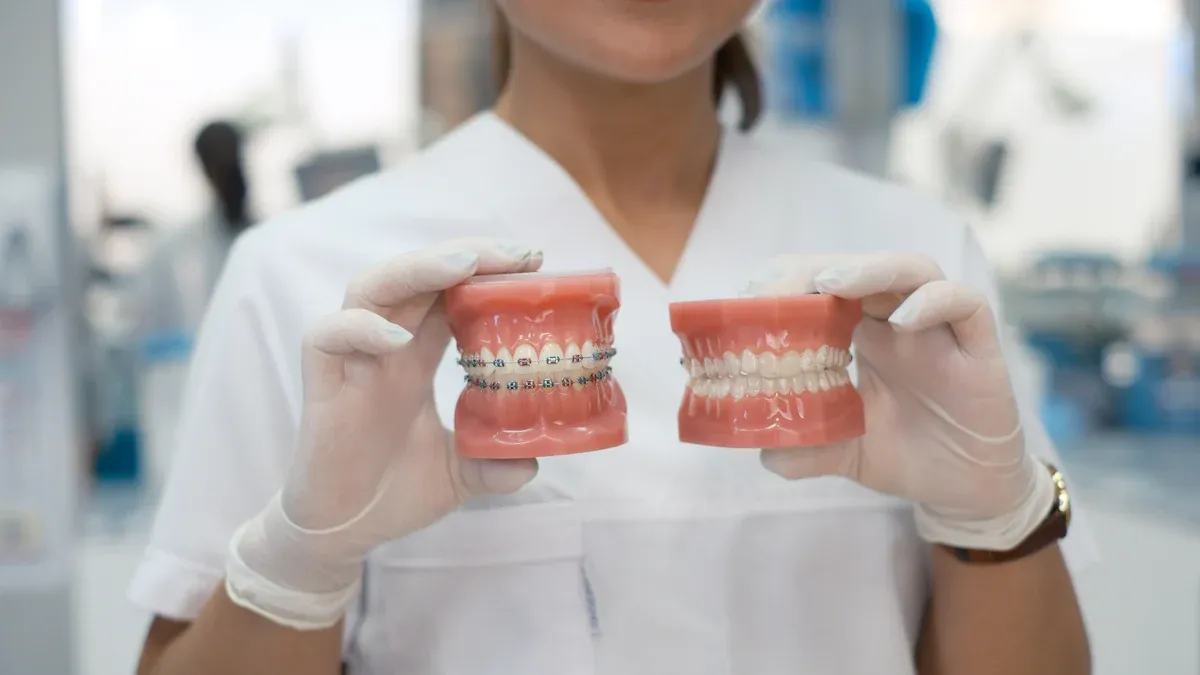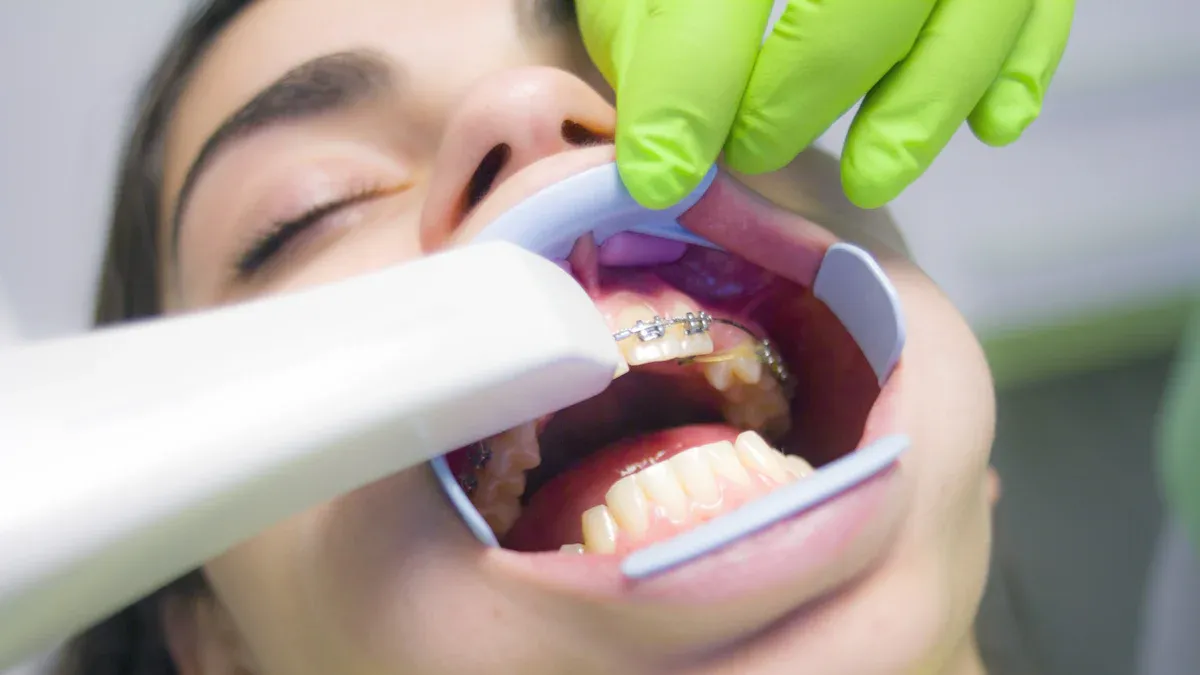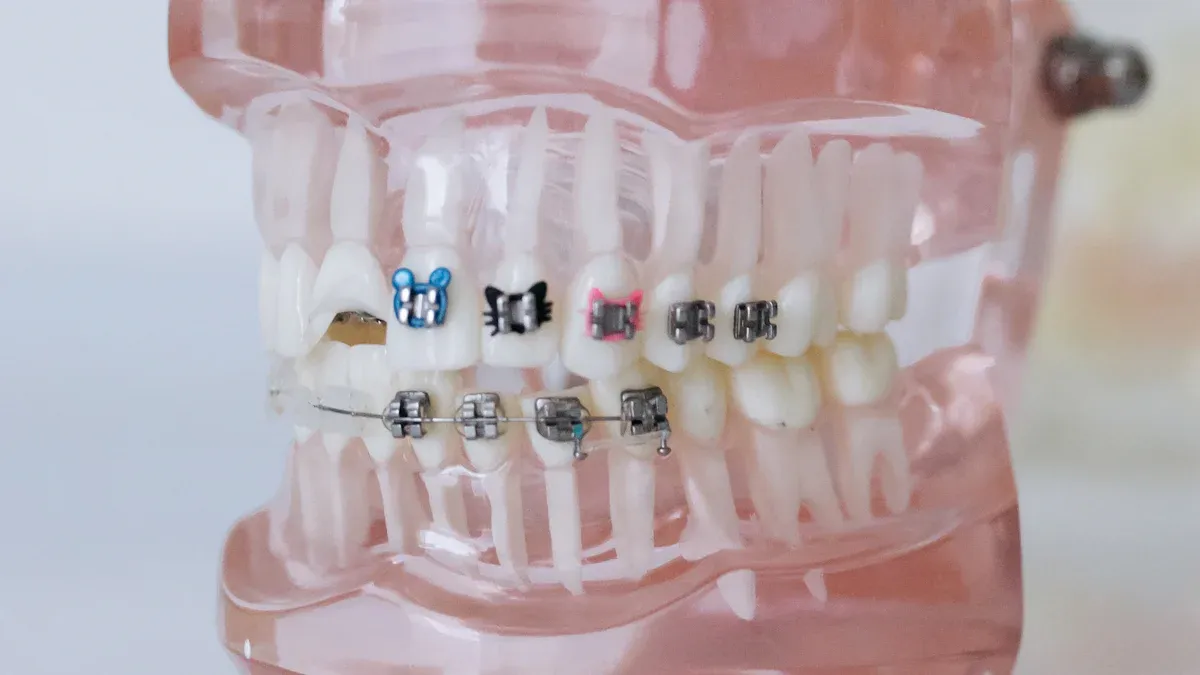What Makes AccuPath Nitinol Tubes Ideal for Orthodontics

Superelastic nitinol tubes with 8% superelastic strain for orthodontic archwires have amazing features that help in orthodontics. These tubes can stretch up to 8% without staying bent, ensuring they function effectively throughout treatment. They assist orthodontic wires in moving teeth gently and steadily, resulting in less pain for patients.
Studies show their benefits:
The I-arch (copper NiTi) worked better than regular superelastic NiTi wires, especially for lower teeth.
The I-arch used only 23 grams of force, while regular wires used 50 grams, leading to significantly less pain for patients.
AccuPath nitinol tubes are made with care and precision. They combine strength and comfort to enhance orthodontic treatments. The nitinol tube with 8% superelastic strain for orthodontic archwires sets a new standard for performance in dental care.
Key Takeaways
AccuPath nitinol tubes can stretch up to 8% without breaking. They give gentle and steady pressure to move teeth effectively.
Patients feel less pain with nitinol tubes. These tubes use much less force than regular wires, making treatment more comfortable.
Nitinol tubes are strong and handle repeated use well. They last a long time without needing to be replaced often.
Nitinol has a shape memory effect. It goes back to its original shape, keeping treatments consistent.
Nitinol tubes may cost more at first. But they last longer and work better, saving money for patients and orthodontists over time.
Mechanical Properties of Superelastic Nitinol Tubes

Superelasticity and Its Benefits for Orthodontic Archwires
Superelastic nitinol tubes are great for orthodontic archwires. They can stretch up to 8% without breaking or staying bent. This means they return to their original shape after being stretched or bent. Unlike regular metals, nitinol behaves differently under stress, making it perfect for orthodontics.
Studies show nitinol helps reduce pain and move teeth faster. Patients using dual-wire systems felt less pain and had quicker tooth movement. The table below shows the results:
Group | Severe Pain | Insignificant Pain | Average Movement (mm/month) |
|---|---|---|---|
NiTi-only group | 5 patients | 1 patient | 3.0 - 4.9 |
Dual-wire group | 0 patients | 9 patients | 6.5 - 7.3 |
These results prove nitinol tubes make treatments more comfortable and effective.
Fatigue Resistance for Long-Term Orthodontic Use
Nitinol tubes are strong and last a long time. They can handle repeated stress without breaking or losing their shape. Tests show nitinol is better than regular metals for orthodontic use.
Nitinol’s strength depends on the size and shape of tiny particles inside it.
These particles are similar to those in other strong materials, making nitinol durable.
Improving how nitinol is made can make it even stronger. Fixing small flaws in the material helps it work better for long-term orthodontic treatments.
Shape Memory Effect in Dental Applications
Nitinol tubes have a special ability called the shape memory effect. This lets them "remember" their original shape and return to it. This happens when the material is heated or stressed.
Important features of the shape memory effect include:
Changes in shape caused by temperature.
Changes in shape caused by pressure or force.
This makes nitinol great for dental work. For orthodontic archwires, it helps keep treatments steady and accurate. Nitinol’s ability to adjust and recover makes it useful for tricky orthodontic cases.
Advantages of AccuPath Nitinol Tubes
Precision Manufacturing for Superior Performance
AccuPath nitinol tubes are made with great care. This ensures they work well for orthodontics. Special methods reduce surface flaws, making them stronger and less likely to rust. Even under stress, these tubes keep their superelastic abilities.
Here’s a breakdown of their features:
Feature | Details |
|---|---|
Inflammation Score | Measures white blood cells in tissue sections. |
Biocompatibility | Strong nitinol reduces bad reactions, good for implants. |
Corrosion Resistance | Smooth surfaces lower chances of rusting. |
Fatigue Strain Limits | Handles 0.4–0.8% strain without breaking. |
These qualities show why AccuPath tubes are trusted for dental and medical use. Their careful design makes them dependable for orthodontists.
Biocompatibility and Patient Safety
AccuPath nitinol tubes are safe for patients. They are made to avoid bad reactions, making them good for long-term use. This is important for devices that stay in the body for a while.
The strong nitinol lowers swelling and irritation. Patients feel fewer problems, leading to better results. The rust-resistant finish stops harmful particles from forming. These safety features make AccuPath tubes a top choice for orthodontics.
Durability and Reliability in Orthodontic Treatments
Durability is key for orthodontic success. AccuPath nitinol tubes are tough and resist wear. They keep their shape and work well during treatment.
Nitinol can stretch 8% without staying bent. This helps move teeth steadily and reliably. The tubes last longer, so fewer replacements are needed. This saves money for patients and orthodontists.
AccuPath focuses on quality and new ideas. Their nitinol tubes are strong, flexible, and precise. They set a high standard for orthodontic care.
Comparing AccuPath Nitinol Tubes to Other Materials
Stainless Steel vs. Nitinol: How They Compare
Stainless steel is strong and affordable, so it’s widely used. But nitinol has special features that make it better for braces. Nitinol can stretch and return to its shape without bending. Stainless steel doesn’t have this flexibility, which is important for moving teeth.
When comparing strength, both materials are similar. Stainless steel has a strength of 600 to 1100 MPa. Nitinol ranges from 500 to 900 MPa. However, nitinol can handle more strain, up to 6%, while stainless steel cannot.
Material | Strength (MPa) | Maximum Strain |
|---|---|---|
Nitinol Tubing | 500 - 900 | >4% (sputtered), 6% (optimized) |
Stainless Steel | 600 - 1100 | N/A |
This makes nitinol better for treatments needing flexibility and precision.
Nitinol vs. Titanium: Why Nitinol Wins
Titanium is light and doesn’t rust, so it’s useful. But nitinol is more flexible and adapts better to stress. Nitinol changes shape at certain temperatures, helping it work smoothly during treatment. This feature also makes it more comfortable for patients.
Titanium is strong but lacks nitinol’s shape memory and flexibility. Nitinol keeps its shape even after repeated use. This means fewer adjustments and more reliable results for orthodontists.
Why Nitinol Saves Money Over Time
Nitinol lasts longer and doesn’t wear out easily. This means fewer replacements, saving money for patients and orthodontists. Its temperature-changing ability keeps it working well throughout treatment, reducing problems.
Nitinol is also safe for the body, causing fewer bad reactions. While it costs more upfront than stainless steel or titanium, its long-term benefits make it worth it. Orthodontists trust nitinol for better, more consistent results in modern dental care.
Applications of Nitinol Tube with 8% Superelastic Strain for Orthodontic Archwires

Making Patients More Comfortable with Superelastic Features
Nitinol tubes with 8% superelastic strain make braces more comfortable. They gently move teeth without causing much pain. Unlike stiff materials, these tubes adjust to mouth movements. This reduces irritation and pressure on gums and cheeks. Patients feel less pain during adjustments and treatment.
These tubes also return to their original shape after bending. This keeps the force steady over time. Steady force helps teeth move smoothly and predictably. Patients enjoy a better experience, making these tubes popular in modern braces.
Helping Teeth Align Faster and Better
Nitinol tubes with 8% superelastic strain help teeth align faster. They keep a gentle, steady force on teeth, which improves results. Studies show these tubes work better than regular wires.
They use gentle force to align teeth effectively.
A study showed teeth aligned 30% faster in six months with nitinol wires compared to steel wires.
This proves they improve both speed and accuracy in treatments.
Orthodontists trust these tubes for reliable results. They don’t need frequent adjustments, so treatments are smoother and quicker.
Solving Tough Orthodontic Problems with Flexible Solutions
Nitinol tubes with 8% superelastic strain are great for tough cases. They can handle tricky tooth movements with ease. Their shape memory lets them adjust to complex dental needs.
For patients with severe misalignments, these tubes work well. They are strong and can handle long treatments without breaking. Orthodontists use them for hard cases, knowing they will work reliably.
These tubes stand out because of their flexibility and strength. They help orthodontists fix many dental problems while keeping patients comfortable and happy.
Superelastic nitinol tubes are special because of their unique features. They can stretch up to 8-10% without staying bent. This shows how flexible and strong they are. These tubes can handle many cycles of stress without breaking. This makes them reliable for long-term orthodontic use. They also have a "memory" that lets them return to their original shape. This happens because of changes between two phases called martensite and austenite.
AccuPath nitinol tubes are made with care and advanced methods. This makes them great for braces and other dental tools. They work well, last a long time, and save money. Orthodontists and patients like them because they are comfortable, precise, and give good results over time.
FAQ
What makes nitinol tubes special for braces?
Nitinol tubes are unique because they are superelastic and have shape memory. They can stretch and return to their shape, working well during braces treatment.
Are nitinol tubes safe for people?
Yes, nitinol tubes are safe and don’t cause irritation. Their smooth surface and rust resistance make them good for long-term use.
How do nitinol tubes help with braces?
Nitinol tubes give steady, gentle pressure, which reduces pain. They are strong and last longer, so orthodontists don’t need to replace them often.
Why are nitinol tubes better than steel?
Nitinol tubes are more flexible and superelastic than steel. They can stretch up to 8% without bending, making them great for tough braces cases.
Do nitinol tubes save money over time?
Yes, nitinol tubes last longer and need fewer replacements. This saves money for both patients and orthodontists in the long run.
See Also
The Importance of Nitinol Tubing in Minimally Invasive Surgery
Nitinol Tubing: A Key Component in Modern Medical Technology
Nitinol Tubing's Impact on the Future of Medical Devices
Nitinol Tubing Applications Transforming Healthcare Device Design

